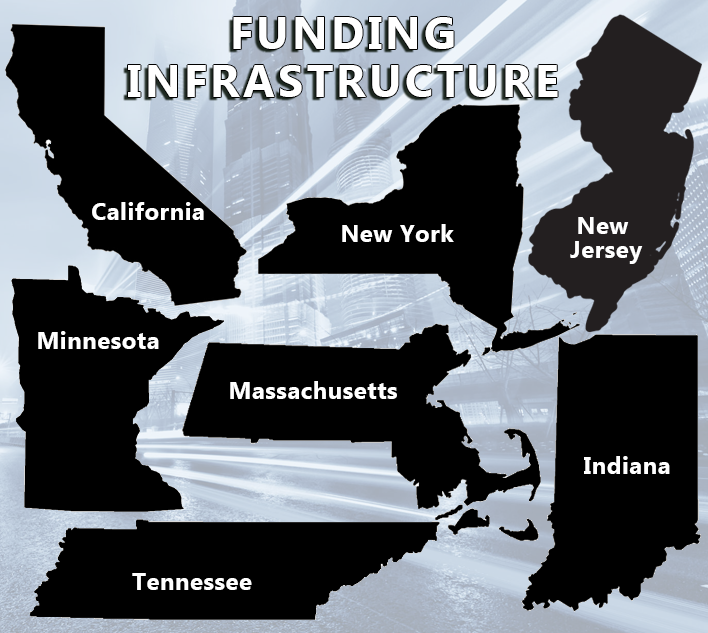It’s impossible to know whether Congress will provide federal funding to stimulate infrastructure spending. Although members from both parties have strongly advocated for addressing the nation’s crumbling infrastructure, there is much disagreement about how much funding to allocate and how to leverage the funding.
State and local government leaders don’t know whether relief will come anytime soon. Because of that, many have decided not to wait on Congress. They know they must protect public assets and they understand that economic vitality cannot be maintained without investing for the future.
Here’s how some visionary leaders are handling infrastructure problems while waiting to see if Congress is going to “step up”:
- Legislators in Minnesota last month passed a bonding bill to address the large shortfall for funding critical projects. The state bond package has provisions for almost $1 billion in spending which includes $255 million for transportation, $212 million for higher education, $116 million for water infrastructure, $100.36 million for human services and $101 million for economic development projects. Major projects that can now be launched include a $67 million Health Sciences Education Facility at the University of Minnesota’s Twin Cities campus, a $32 million bridge repair project in Minneapolis, a $70 million St. Peter Security Hospital upgrade and a $12 million bus rapid transit project that connects Minneapolis to Burnsville.
- In March, New Jersey Gov. Chris Christie signed a bill that immediately allocated $400 million to address bridges, roadways and rail lines in all of the state’s 21 counties. Of the $400 million, $260 million was allocated for the Department of Transportation and $140 million was designated for the New Jersey Transit’s continuing work on its Positive Train Control rail safety technology project.
- In California, Gov. Jerry Brown recently signed a 10-year, $54 billion transportation infrastructure funding plan that will be paid for with increased taxes on fuel and vehicle purchases. The plan allocates $26.6 billion for local projects and $25.8 billion for state projects. In addition to addressing deferred maintenance on roads and bridges, the revenues will make key investments in trade and commute corridors, match locally-generated funds for projects and invest in passenger rail and public transit modernization.
- In April, New York’s Gov. Andrew M. Cuomo signed the Clean Water Infrastructure Act, which allocates $2.5 billion for drinking water and clean water infrastructure projects. The state designated $1.5 billion in grants for water infrastructure improvements, a $75 million rebate program for upgrading and replacing old septic systems and $110 million for green infrastructure. The state’s 2018 budget also includes additional water quality investments such as $40 million for two local water treatment systems and $5 million for clean water technology.
- In May, Massachusetts Gov. Charlie Baker signed a $290 million transportation funding bill that will reimburse municipalities for road-related construction projects. The bill also includes $30 million for the reauthorization of mobility assistance programs and $60 million to replace the state’s Registry of Motor Vehicles software platform.

There are many other examples of aggressive leadership at the state level of government. Taxpayers should be pleased these public officials are visionary and bold because the regions they govern are the ones most likely to remain healthy and vibrant.
SPI’s government contracting consultants have decades of experience and personal relationships at all levels of government. Learn how they can help your company grow your business by contacting them today.






